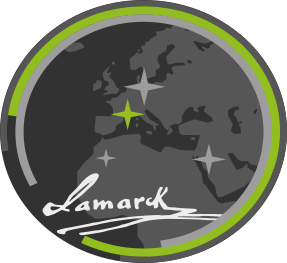Announcing our “Lamarck” Atmospheric Dataset
Initiative for Academic Research
Miratlas, a leading provider of atmospheric characterization solutions for optical and quantum communication systems. Headquartered in France, is releasing access for its customers to its “Lamarck” database under the Creative Commons BY-NC-SA 4.0 license to support academic research in free space optical (FSO) communication.
This initiative empowers scientists to:
- Analyze atmospheric conditions (turbulence, cloud cover, humidity) critical for optimizing FSO systems.
- Simulate real-world scenarios for satellite-to-Earth and terrestrial laser communication.
- Develop adaptive optics design and encoding algorithms to mitigate signal interference.
The dataset, derived from Miratlas’ own network of over twenty Sky Monitor sites (some operating for many years), is part of a fifty sites global network (including customer-deployed instruments). The database holding 19TB of data grows by 1TB per month, offering researchers unparalleled depth and real-time relevance.

Our Open Data initiative aims at advancing optical and quantum communication technologies. By providing access to our dataset, Miratlas supports the Free Space Optical Communication community in addressing key challenges, such as atmospheric turbulence, signal attenuation, and system reliability, while fostering collaboration between academia, industry, and ESA.
Key Benefits for Research Customers
- Unlimited Access to a Large-Scale Dataset
Academic institutions and research customers now have complete, non-commercial access to Miratlas’ high-resolution atmospheric data. This dataset includes critical parameters like turbulence and cloud cover—essential for modeling and optimizing FSO communication systems. - Creative Commons Licensing
Researchers can use, share, and adapt the data under the CC BY-NC-SA 4.0 license, ensuring flexibility for studies while maintaining ethical use. This license allows modifications and redistribution, provided the work remains non-commercial and properly attributed. - Focus on Free Space Optical Communication
The dataset is tailored to support FSO communication research, enabling scientists to:- Study atmospheric interference on laser signals,
- Develop turbulence mitigations strategies such as adaptive optics and encoding algorithms,
- Simulate link budget based on real-world conditions for satellite-to-Earth and terrestrial FSO systems.
- Robust Data Security and Compliance
Miratlas ensures all data is protected under strict confidentiality and cybersecurity protocols (aligned with GDPR standards), giving researchers confidence in data integrity and ethical handling.
A Game-Changer for Academic Innovation
By multiplying the quantity of atmospheric data available, Miratlas empowers academic teams to accelerate breakthroughs in FSO communication. This initiative aligns with Miratlas’ mission to democratize scientific research while safeguarding intellectual property and data rights.
The Sky Monitor, 24/7 measurements
The Sky Monitor combines a full array of passive optical sensors and analyses light propagation to continuously characterize atmospheric absorption and scattering.
The Sky Monitor enables site survey & selection, optical terminal design & operations, ground segment optimization planning & routing. With its low SWaP, rugged & carrier grade design, the Sky Monitor is plug & play and provides local, high precision measurements with its complete array of passive sensors including:
- All sky visible imager, 450-1000 nm
- All-sky thermal cloud cover imager 8-14μm
- C-DIMM nighttime turbulence
- Alt-Az tracking mount enabling C-DIMM operation worldwide
- Sun Scintillation Sensor daytime turbulence
- Weather Station
It is the first instrument on the market combining turbulence measurements by night and by day to be available Commercially-off-the-shelf. The full documentation is available online.

Sky Monitor Network: turning analog clouds digital
Since the installation of the first Sky Monitor for ESA in Tenerife in 2018, we’ve been improving on its design as we gained field experience while accumulating atmospheric data.
Because FSOC requires local and real time measures of both cloud cover and turbulence, it is necessary to deploy a network of Sky Monitors to precisely measure these conditions in enough locations to achieve the necessary site diversity to maintain continuity of service for optical links between ground and space.
Today, our network spans over 50 locations in 17 countries. It holds 19TB of unique atmospheric data and grows monthly by 1TB. We have developed our own multi-cloud architecture to ensure backhauling, storage, access, monitoring and backup. Researchers can explore and download data via Miratlas’ secure platform. For collaboration opportunities or dataset-specific inquiries, please contact us.
“We believe access to atmospheric data is vital for advancing technologies like free space optical communication. Atmospheric propagation understanding is key to mitigation strategies such as site diversity, adaptive optics, encoding and network routing.” said Jean-Edouard Communal, Miratlas’ Co-founder and CEO. “Our partnership with the academic community ensures this data fuels the innovation necessary to solve the complex problem of making Optical to Orbit Communication reliable and achieve Miratlas’ goal to converge terrestrial and orbital connectivity infrastructure.”
Open Data Terms of Service explained
The Terms and Conditions of Sales for the Sky Monitor as well as the Terms of Service for the End User License Agreement clarify the following:
- Ownership of Customer-Generated Data: Data generated by the Customer using Miratlas's services/products remains exclusively owned by the Customer.
- Miratlas’ Rights to Use Customer Data: The Customer grants Miratlas a non-exclusive, royalty-free, sub-licensable right to use this data for purposes like service upgrades. However, this does not transfer ownership to Miratlas.
- Creative Commons (CC) License: The CC BY-NC-SA 4.0 license governs data accessed via Miratlas’ platform, allowing non-commercial use, sharing, and modification under specific conditions. This license does not apply to data generated by the Customer through their own Sky Monitor.
- Restrictions on Use: Automated data extraction (e.g., for AI training) is explicitly prohibited, even if the CC license might otherwise permit it and will be subject to a separate, case by case agreement.
In short
Customers gain access to Miratlas’ data and that of other signatories under the CC license.
Miratlas does not gain commercial ownership of customer-generated data but secures a license to use it.
The CC license applies to Miratlas-provided data, not to data collected by the Customer via their own Sky Monitors.
The terms do not explicitly exchange commercial rights for scientific access under CC. Instead, they define how Miratlas may use customer data and how customers may access Miratlas’ platform data under CC.

